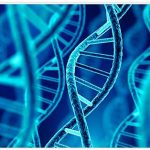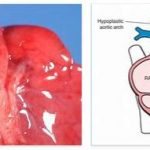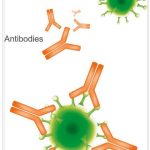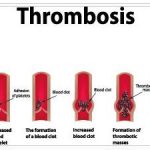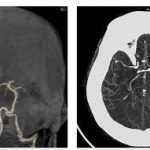Maffucci syndrome is an extremely rare tissue disease of the mesoderm associated with multiple cartilage tumors. Since those affected have an increased risk of malignant degeneration, they must have their lesions checked regularly by orthopedists and dermatologists. So far, there is no causal therapy.
What is Maffucci Syndrome?
According to Fun-Wiki, the patients of Maffucci syndrome suffer from a developmental disorder of the mesodermal tissue. The disease manifests itself in complex cartilage tumors of the mesoderm. The tumorous changes are predominantly benign in nature. In around 20 percent of all cases, malignant degeneration occurs in the course of life. The disease is therefore associated with an increased risk of chondrosarcoma, hemangioma and fibrosarcoma.
Gliomas can also occur as part of the syndrome. Maffucci syndrome is also known as osteochondromatosis-hemangiosis syndrome or Kast syndrome. The pathologist Angelo Maffucci first described the tumor disease in the 19th century. In the same century, Alfred Kast and Friedrich Daniel von Recklinghausen documented the multiple cartilage tumors of the mesoderm in a paper. Maffucci syndrome is a rare disease that has only been described 250 times to date. It often breaks out between the ages of one and five years and affects both men and women. The peak of the disease is puberty.
Causes
The causes of Maffucci syndrome have not yet been conclusively researched. In most cases, the tumor disease occurs sporadically. Familial clustering has rarely been observed. In isolated cases, the disease has been associated with an autosomal dominant inheritance. Nevertheless, it is not considered to be a hereditary disease. Presumably, rather than genetic factors, mesodermal dysplasias in the early life of the patients are associated with the tumors.
A geographic or ethnic accumulation has not been observed so far. In 25 percent of those affected, the anomalies of the mesoderm are already present immediately after birth. The assumed connection with earlier dysplasia of the mesoderm is therefore probably not the only connection favoring the onset of the disease.
Symptoms, Ailments & Signs
Immediately after birth, most patients with Maffucci syndrome are unremarkable and completely asymptomatic. Often painful enchondromas do not develop until months after birth. Lymphangiomas or hemangiomas also appear. They are both on the skin and in the internal organs. The distribution of the lesions is asymmetrical and not confined to an anatomical structure.
During growth, those affected suffer from bone deformities that can cause pathological fractures. The enchondromas initially correspond to benign growths on the cartilage of the long bones or phalanges. Irregularly shaped and dark blue subcutaneous nodules appear on the capillaries of the limbs. Venous and lymphatic malformations can also occur. As a rule, the disease with its individual symptoms is progressive.
Diagnosis & course of disease
The diagnosis of Maffucci syndrome is based on the clinical findings. Radiological findings usually secure the first suspected diagnosis. In the differential diagnosis, Ollier disease, in which there is multiple enchondromatosis without hemangiomas, should be considered. The Proteus syndrome must also be considered in the differential diagnosis. Life expectancy is not usually reduced for patients with Maffucci syndrome.
However, the course of the disease is individual. The fractures and deformities limit many of the patients only slightly in everyday life. In other cases, however, there is a severe impairment due to a severe disability. Since patients with this disease are usually closely monitored throughout their lives because of the increased risk of degeneration, malignant processes are usually recognized early enough to be treated appropriately. The disease often comes to a standstill in the course of life.
Complications
In most cases, Maffucci syndrome causes severe pain in patients. Since the symptoms do not appear immediately after birth, but only later, early treatment of this disease is not possible. The pain, especially in small children or babies, causes severe pain and high-pitched screaming.
Deformations and growths occur in the bones. These have a very negative effect on the patient’s everyday life, resulting in restrictions in movement and general limitations in the patient’s everyday life. The bones break down and various malformations occur all over the body.
Not infrequently, those affected by Maffucci syndrome are also dependent on the help of other people in their everyday life or suffer from very severe disabilities. The quality of life of patients is significantly reduced and restricted by Maffucci syndrome.
The treatment of Maffucci syndrome depends on the symptoms. These can be alleviated by surgical interventions, although there is not always a positive course of the disease. In many cases, those affected depend on the help of other people throughout their lives.
When should you go to the doctor?
If growing children show sudden changes in the complexion, a doctor should be consulted to investigate the cause of the abnormalities. Swelling, discoloration, and growths are considered unusual and are signs of an existing disorder. Blue discoloration of the skin is a cause for concern. A doctor’s visit is necessary so that treatment can be initiated as soon as possible. If the skin changes become more intense or if they gradually spread over the body, action is required and a doctor should be consulted.
Bone deformities, optical peculiarities of the skeletal system or mobility problems must be examined and treated. If there are irregularities in the growth process in areas of the body where cartilage is present, a doctor is needed. If there is nodule formation on the limbs, recurring fractures or functional disorders, a doctor’s visit is necessary. A doctor should be consulted if the child is generally ill, persistently unwell or has behavioral problems.
In particular, asymmetrical abnormalities in the growth process are an indication of an existing disease and a special feature of Maffucci syndrome. If pain occurs, the child shows tearful behavior, disinterest in social activities increases or school performance decreases, medical help is needed. Personality changes are another sign of a health condition that should be treated.
Treatment & Therapy
Since the etiology of Maffucci syndrome is unknown, no causal therapy is available to date. Treatment is therefore exclusively symptomatic and supportive. The early detection of malignant degeneration processes is the main focus of therapy. Those affected take part in extensive examinations throughout their lives in order to identify the possible degeneration of the lesions at an early stage.
For this purpose, they consult both orthopedic surgeons and dermatologists, who assess their multiple skin and bone findings for their malignancy and document changes in the best possible way. Patients often remain asymptomatic throughout their lives. In such a case, no symptomatic treatment is induced. However, even symptom-free patients are not spared the regular check-ups.
If pain or other symptoms develop during the course of the disease, these symptoms are alleviated by the treating dermatologists and orthopedists with a targeted symptomatic therapy. If sarcomatous tissue is present, the affected area is surgically removed. The orthopedist takes care of the correction of bone deformities or fractures. Hemangiomas are treated by dermatologists. Since the disease comes to a standstill in the second decade of life in individual cases, the lesions can also be checked at longer intervals over time.
Outlook & Forecast
The prognosis of Maffucci syndrome is significantly linked to the further course of the disease. Without medical care, mostly benign tumors will repeatedly form and develop. However, the risk of developing a malignant tumor is significantly increased in these people. In addition, limitations in quality of life and numerous complaints that develop as a result of the disease are to be expected.
Various therapeutic approaches are pursued with medical treatment. Although there is no causal treatment measure, a significant improvement in the situation can be achieved through symptomatic care and regular monitoring of the current state of health. In addition to alleviating the symptoms, the treating physicians concentrate on preventing an unfavorable course of the disease.
In the event of a malignant degeneration of the tissue changes, it should be possible to react as quickly as possible by taking the necessary measures. This approach improves the overall prognosis and the general course of the disease. Nevertheless, the affected person normally has to undergo several surgical procedures in the course of his life. These are associated with risks and can lead to complications. With a very favorable course of the disease, there is a stagnation of developments in the second half of life. No new tumors form here. This achieves a significant improvement.
Prevention
So far, the causes of Maffucci syndrome are more or less speculative. Since the etiology remains so unknown, the disease cannot yet be successfully prevented. However, those affected can very well prevent the degeneration of any lesions by having the anomalies of their skin and bones assessed by a doctor in close controls.
Aftercare
The Maffucci syndrome can lead to significant symptoms or complications in those affected, so that this disease should ideally be recognized and treated by a doctor very early on. As a rule, self-healing cannot occur. Those affected suffer from skin complaints, which leads to the formation of very painful areas on the skin.
This not only has a negative effect on the quality of life, but those affected also suffer from their reduced aesthetics. This leads to inferiority complexes and, associated with this, not infrequently to depression or other mental upsets. The support of a professional psychologist can help to gain confidence in dealing with the condition. The further course depends heavily on the severity of this disease, so that a general prediction is usually not possible.
You can do that yourself
The focus of the treatment of Maffucci syndrome is regular check-ups by a specialist. Close monitoring is necessary to detect any sarcomas, especially chodrosarcomas, but also osteosarcomas, fibrosarcomas and angiosarcomas at an early stage. Above all, people in the second decade of life should consult a doctor regularly if they have previous illnesses or if there have already been cases of Maffucci syndrome in the family.
The usual measures apply after an operation: the patient should take it easy for a few days or weeks, pay attention to good wound care and hygiene and, under certain circumstances, change their diet. If bone deformities or fractures occur, treatment by the orthopedist is required. Occasionally the patient needs a prosthesis or other orthopedic aids in order to continue to be able to move freely.
In the case of a severe course, therapeutic advice is also indicated. Any fears can be dealt with by talking to a psychologist . This allows you to maintain a certain quality of life despite illness. Typical accompanying symptoms such as pain or feelings of pressure in the area of the affected tissue or bone are treated with various drugs, which can be supplemented with natural painkillers and sedatives in consultation with the doctor.

